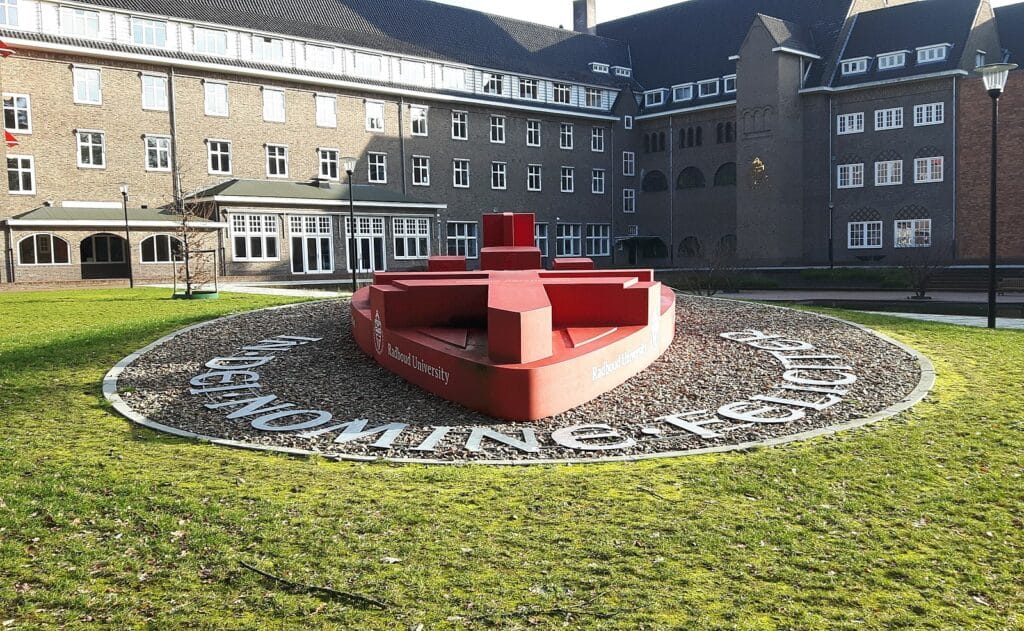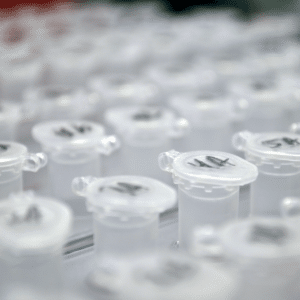
According to the United States’ National Institutes of Health (NIH), an estimated 7,000 rare diseases collectively impact between 3.5% to 5.9% of the global population, equating to 263 to 446 million individuals. One of the most challenging aspects of rare diseases is being able to identify them, which is crucial for offering patients and families a diagnosis and a possible direction for the future. That is why rare disease researchers around the world are investigating how to get answers faster.
Genetic basis of rare diseases
 The NIH currently estimates that around 80% of rare diseases are genetic. A team of researchers at Radboud University Medical Center (Radboudumc) in Nijmegen, Netherlands is looking at how they can reduce the time it takes to identify and name a person’s rare genetic disease. “The focus of my research is to find the best way to molecularly diagnose patients with a rare genetic disease. My ultimate goal is that this is a rapid diagnosis, obtained in a least-invasive way, but also cost-effective for our healthcare system,” explained Lisenka Vissers, Department of Human Genetics and Radboudumc Research Institute for Medical Innovation, Radboud University Medical Center Nijmegen, Netherlands. Vissers envisions a scenario where a diagnosis could be delivered in under a week through a simple blood test. Aware of the profound difficulties faced by those without a genetic diagnosis, she has dedicated herself to relentlessly pursuing the necessary tools, techniques, and approaches to help expedite the diagnostic process as swiftly as possible.
The NIH currently estimates that around 80% of rare diseases are genetic. A team of researchers at Radboud University Medical Center (Radboudumc) in Nijmegen, Netherlands is looking at how they can reduce the time it takes to identify and name a person’s rare genetic disease. “The focus of my research is to find the best way to molecularly diagnose patients with a rare genetic disease. My ultimate goal is that this is a rapid diagnosis, obtained in a least-invasive way, but also cost-effective for our healthcare system,” explained Lisenka Vissers, Department of Human Genetics and Radboudumc Research Institute for Medical Innovation, Radboud University Medical Center Nijmegen, Netherlands. Vissers envisions a scenario where a diagnosis could be delivered in under a week through a simple blood test. Aware of the profound difficulties faced by those without a genetic diagnosis, she has dedicated herself to relentlessly pursuing the necessary tools, techniques, and approaches to help expedite the diagnostic process as swiftly as possible.
Overcoming technical limitations
“Today, most patients with a rare genetic disease can already undergo ‘one test’ to find this diagnosis, such as short read exome or genome sequencing. This is already great as these strategies provide a genetic diagnosis in approximately 30-40% of patients. Yet, a substantial fraction of patients requires more than one genetic test, often performed sequentially, increasing the overall time to diagnosis. Moreover, for the majority of patients, the genetic cause remains elusive, despite all tests performed,” said Vissers. “From a research perspective, I hypothesize that either short read technologies have not yet identified the genetic cause because of technological limitations and thus requiring new technologies to find them, or alternatively, we fail to correctly recognize the genetic variants as pathogenic because of its location affecting non-coding sequence, requiring more functional follow-up to understand their relevance to disease.”
The promise of HiFi sequencing
Vissers and her team at Radboudumc were early adopters of long-read sequencing and have been using PacBio Sequel platforms for their research. “In our initial studies testing subjects with genetically undiagnosed neurodevelopmental disorders, we already could see the huge potential of long reads as we were now able to sequence parts of the human genome in a single assay that had previously with short reads remained inaccessible. These regions also included parts of the human genome containing well-described known disease genes, underscoring the relevance of long reads over short reads. HiFi sequencing has changed the rules of the game again – the accuracy to also detect (de novo) SNVs robustly, in combination with the higher throughput on Revio, have made it feasible to perform larger studies focusing on the hypothesis that long read sequencing allows the detection of previously undiscovered genetic variation.”
 The team at Radboudumc holds a firm conviction that every patient suffering from a rare genetic disease deserves access to a test that offers the highest probability of delivering explanations in the shortest possible timeframe. This principle fuels their ongoing research efforts, as they strive to transform this aspiration into reality. In pursuit of this goal, they have initiated the Nijmegen Revio-500 Study, marking a significant step forward in their commitment to advancing potential diagnostic research capabilities for these challenging conditions.
The team at Radboudumc holds a firm conviction that every patient suffering from a rare genetic disease deserves access to a test that offers the highest probability of delivering explanations in the shortest possible timeframe. This principle fuels their ongoing research efforts, as they strive to transform this aspiration into reality. In pursuit of this goal, they have initiated the Nijmegen Revio-500 Study, marking a significant step forward in their commitment to advancing potential diagnostic research capabilities for these challenging conditions.
“For the first part of the study, we selected 100 ‘difficult’ genetic variants previously identified as genetic cause of disease using other workflows. Difficult here refers to variants located in regions of sequence homology, having pseudogenes, being (longer) repeat expansions, methylation defects, inversions, etc. We expect that the HiFi long read genomes have no issue detecting them, by which we can show that these genomes can be used to detect ‘what we couldn’t identify before’. In addition, we hope to show that we obtain more detailed information from the long-read genomes than obtained in the routinely used workflows, such as phasing information and the exact sequence context for repeat expansions. For the second part of the study, we will use study subject samples where the potential genetic cause remains elusive after exhausting all other detection opportunities, including short read exomes and/or genomes and/or additional targeted assays. We hope to show that using HiFi long reads genomes, we can now identify variants that were not identified before. The potential findings would be a good incentive for further implementation in developing a future diagnostic workflow.”
Vissers and her colleagues are on the brink of completing the initial phase of their study, having made a significant discovery: 95% of variants can be effectively identified. Of these, 87% are automatically recognized through existing analytical pipelines, while the remaining 7% necessitate manual curation, such as inspecting aligned reads. The variants that proved challenging to detect include expansions of AG-rich repeats, as well as variants located in the repeat-dense regions of the Y chromosome and/or the acrocentric p-arms. Impressively, the team has also already uncovered its first novel discovery within the cohort studied for the second goal of the project.
Along with the wins of a new explanation, the team has also had some pleasant surprises.
“We were hoping to prove our hypotheses, both that HiFi sequencing would potentially enable us to replace our current workflows, and also, to enable research leading to an increase in diagnostic yield. However, that we were able to generate such high-quality data already from run one, and that the variants are so easily detectable has positively surprised me,” stated Visser.
Based on preliminary results so far, Vissers and her team “are already confident that HiFi reads can replace the multitude of genetic assays and workflows currently used to detected variants in the more complex regions of the genome. Our next steps will be to further explore, in our research, how we can potentially position HiFi genome sequencing in future routine diagnostic testing and determine which tests can potentially be replaced by HiFi sequencing.”
Interested in learning more about the rare disease research at Radboudumc?
If you would like to learn more about the research at Radboudumc and hear from Lisenka herself, we invite you to attend the live webinar event on March 13, 2024.